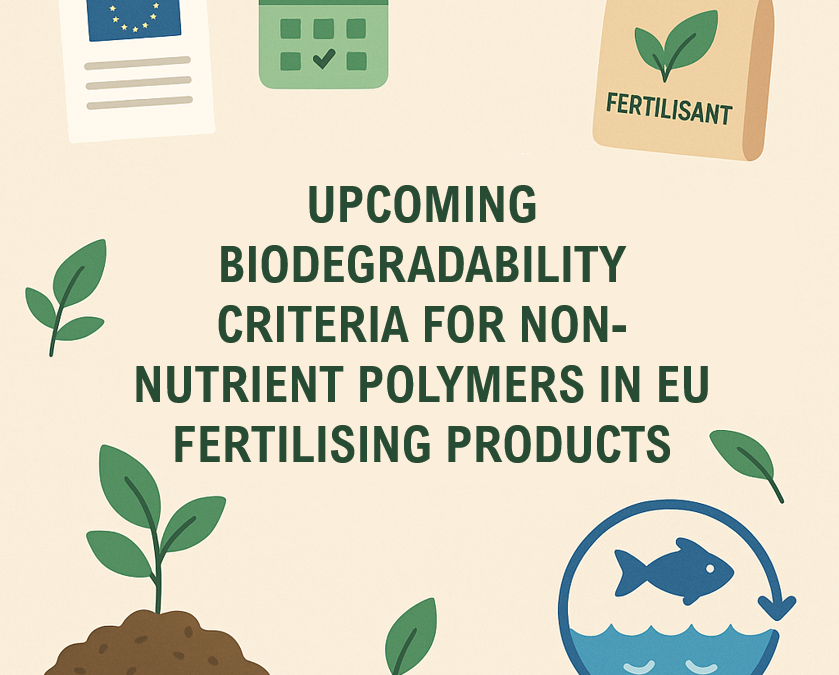Biodegradability of Coating Agents and Water Retainers for Fertiliser Use: Prepare for the 2028 Requirements
At a time when the European Commission has just published its guidance on the restriction of microplastics (Regulation (EU) 2023/2055), the polymers used in EU fertilising products are also attracting the attention of legislators.
With the publication of Delegated Regulation (EU) 2024/2770 on 28 October 2024, new biodegradability requirements for non-nutrient polymers (coating agents, water retainers, wetting agents) will be introduced into Regulation (EU) 2019/1009 (FPR).
- Why new biodegradability obligations?
When the FPR was adopted in 2019, biodegradability criteria had not been defined, due to the lack of harmonised evaluation methodologies and sufficient environmental impact studies. However, the European Commission has continued its work to regulate the use of non-nutrient polymers, particularly to:
- Address concerns about the accumulation of plastics in terrestrial and aquatic environments.
- Align with the European Strategy on Plastics and the restriction of microplastics established by Regulation (EU) 2023/2055 of 28/09/2023 amending Annex XVII of REACH.
- What does Regulation (EU) 2024/2770 stipulate?
From 17 October 2028, any non-nutrient polymer used in an EU fertilising product must:
✅ Be either a naturally occurring, chemically unmodified polymer or demonstrate its biodegradability according to specific criteria in:
- Soil: 90% degradation or mineralisation within 48 months + the product’s functionality period[1]; and
- Aquatic environments: varying requirements depending on the environment (freshwater, estuarine, marine).
✅ Be tested according to precise standards:
- EN ISO 17556:2019 or ASTM D5988-96:2018 for soil.
- EN ISO 14851:2019, EN ISO 14852:2021 or ASTM D6691:2018 for water.
Note: These changes are not yet included in the consolidated version of the FPR (November 2024), but the Delegated Regulation is already in force.
- Why anticipate these requirements today?
The compliance of existing fertilisers and the development of new products will require rigorous biodegradability testing, along with ecotoxicology assessments and environmental fate evaluations.
For fertiliser manufacturers and raw material producers, integrating these requirements into product development now is crucial to ensure the long-term viability of product ranges beyond 2028.
Do you have questions about the compliance of your polymers or new fertiliser formulations? Our Equitox team is here to assist you!
Feel free to contact us at: contact@equitox.eu.
[1] The time period following use during which the nutrient release is being controlled or the water retention capacity is being increased.
